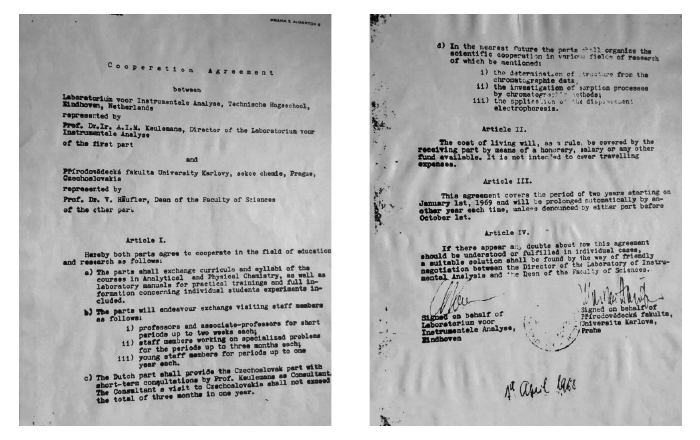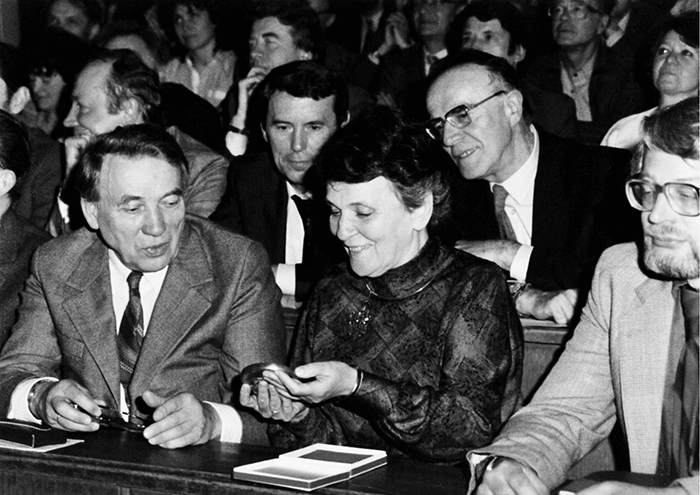Today, we often take for granted the free exchange of scientific ideas. With instant online communication through a multitude of channels, scientists are more connected than ever before. What would become of science, if those freedoms were curtailed? During the Cold War, the Soviet Union-imposed ‘Iron Curtain’ restricted the ability of Eastern Bloc citizens to travel, trade or communicate with the wider world. Many of the participants of the upcoming International Symposium on Separation Sciences (ISSS 2017) in Vienna have ties to Eastern Europe. We asked some of them to share their experiences of analytical research before and after the fall of the Iron Curtain. The results make for interesting reading. All describe challenges in obtaining supplies, sharing their findings and collaborating with Western institutions. Nevertheless, separation science in Eastern Europe survived, and even thrived, during this period – testament to the resourcefulness of researchers but also confirmation that science will always “find a way.”
My memories of the Cold War period are intertwined with the rise of gas chromatography (GC) in Czechoslovakia, which I witnessed from its infancy in the early 1950s. At the time, I was a PhD student at the Department of Analytical Chemistry at the Faculty of Science of Charles University, Prague. The head of the department asked me to “fulfill his dream” of adding gas analysis to our research and educational program in analytical chemistry. Of course, he had classical gas analysis in mind, with Bunte or Hempel burettes and pipettes, and so on. However, as at other times in my life, I was in the right place at the right time – in this case, at an analytical conference held in Prague in 1952, where Jaroslav Janák presented an early gas chromatograph, a fully glass device with volumetric detection, with CO2 as the carrier gas and classical absorbents as column packing.

The rise of GC
It was a simple device, easy to build, and soon became very popular – and not only in our country. In our laboratory, we changed the volumetric detection, which required manual evaluation of the retention data, for a glass thermal conductivity detector placed in a thermostat, and used hydrogen as carrier gas. This device was more universal and, thanks to the hydrogen, more sensitive. For a time, homemade/tailor-made instruments were used successfully for both basic research and specialist applications. Then, in 1956, the first commercial gas chromatographs were built by Laboratory Instrument Company in Prague and became known under the name Chrom I–V, with innovations in each iteration. Very early on, Jaroslav Janák organized a meeting where only five people (Janák – Brno, Cabicar – Prague, Franc – Pardubice, Šingliar – Nováky and I) came together to share their experiences, but after a few years (1957) there were 22 representatives, not only from academic and university laboratories, but also researchers from the main industrial institutions – reflecting the great interest and rapid expansion of GC.Crossing the divide
Behind the Iron Curtain, the lack of foreign currency restricted opportunities not only to buy instruments, but also books and journals from the so-called Western countries. Having said that, we were not as isolated as it may seem. Czech scientists were represented on the editorial boards for the main international separation science and chromatography journals of the time, and there was no lack of Czech chromatographers authoring and contributing to important books both in Czech and in English. For the leaders of the field, there were many options for contact with leading scientists in Western countries. As the level of scientific research in our country became known, Czech scientists were invited to international conferences and often asked to present keynote lectures. It is true, however, that this happened for a limited number of people – and was always dependent on whether the authorities would give their permission to travel abroad. At any rate, there were channels for personal contacts. From 1954 there were important conferences in Leipzig or East Berlin, which made it possible for chromatographers from Middle and Eastern Europe to meet the world’s top scientists. Extraordinarily important for facilitating contact between leading laboratories in the West and in our country was the Scientific Exchange Agreement (SEA). This idea from A. I. M. Keulemans was realized in 1968 thanks to the generous financial support of Clark Hamilton. The basis of the activities were short visits and long-term research stays between labs in East and West. It started with an agreement between the Technical University Eindhoven and the Faculty of Science at Charles University, Prague and part of the official culture agreement between the Czechoslovak Ministry of Education and Culture and the Netherland authorities. The cooperation soon extended to leading labs in Western Europe (including the Guiochon lab in Paris, Huber in Vienna, and a number of labs in West Germany) and laboratories across Czechoslovakia. Later, labs in Hungary, East Germany, Poland and Yugoslavia came on board. According to an article published in Chromatographia in 1982 by Georges Guiochon, around 120 research stays exceeding six months and a large number of 3-6 month stays were supported, as well as close to 300 discussion visits, lecture tours and participation in symposia, including the “Danube symposia” which were held in Bratislava, Karlovy Vary, Hungary and Poland. All of these initiatives had the same goal − to make connections between scientists from East and West.




